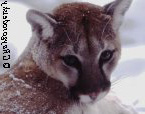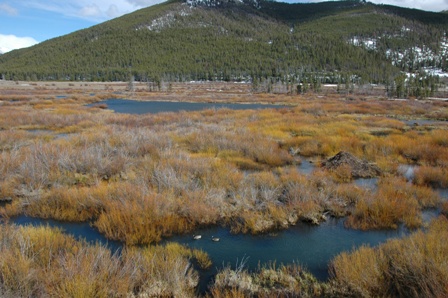WCS Canada is committed to the conservation vision for the Yellowstone-to-Yukon (Y2Y) ecoregion that with the Rocky Mountains at its heart, forms part of the western mountain system of North America.
The Y2Y initiative "seeks to combine science and stewardship to ensure that the world-renowned wilderness, wildlife, native plants, and natural processes of the Yellowstone to Yukon region continue to function as an interconnected web of life, capable of supporting all of the natural and human communities that reside within it, for now and for future generations."
WCS Canada is contributing to the Y2Y vision with projects extending from the United States border north into the Northwest Territories and Yukon. These efforts are complimented by the initiatives of WCS Bozeman office in and around the Greater Yellowstone Ecosystem (GYE).

Yukon/British Columbia Boreal Mountains
Straddling the boundary of British Columbia and Yukon, the Northern Boreal Mountains landscape covers a remarkably diverse set of intact ecosystems and biodiversity, including a major salmon-bearing river, magnificent unpolluted lakes, extensive wetlands, remnant Beringian grasslands, boreal and subalpine forests, and alpine tundra. To find out more click
here.

Nahanni National Park
Too small, too narrow -- this is the problem facing Nahanni National Park in the Northwest Territories. Only 8 km wide in sections, Parks Canada has long recognized that the boundaries do not meet its legislative mandate of providing for ecological integrity, particularly for wide-ranging animals like grizzly bears and caribou. Research by WCS Canada is contributing idirectly to plans to extend the park.
To find out more click
here.

Crowsnest Pass
The Crowsnest Pass is a sensitive area located at the Alberta/British Columbia divide, where a major highway bisects the narrowest section of the Canadian Rockies. Roads, residential development, oil-and-gas exploration, logging, and unregulated ATV use all combine to fragment and degrade this critical corridor for large carnivores like grizzly bears, wolves, lynx and cougars.
To find out more click
here.
Transboudary Flathead
A unique community of carnivore species resides in the Transboundary Flathead region that appears unmatched in North America for its variety, completeness, use of valley bottomlands, and density of species that are rare elsewhere. Due to its unique characteristics and its strategic position as a linkage between National Parks in Canada & the US, the Transboundary Flathead may be the single most important basin for carnivores in the Rocky Mountains. To find out more click
here.
 Water Conservation in the Face of Climate Change
Water Conservation in the Face of Climate Change
In the arid Rocky Mountain West, the flow of water may decline as climate becomes warmer and drier in the future. The amount of snowpack in the mountains will be less, melting and runoff will occur earlier in the spring, and stream flow will diminish earlier in summer. A natural ally in our efforts to conserve and manage water in the face of climate change is the beaver and its engineering skills. To find out more click
here.